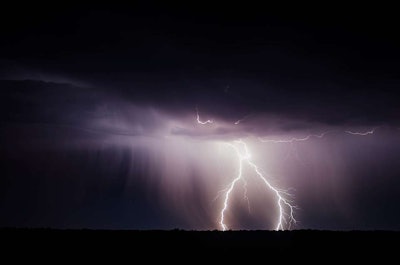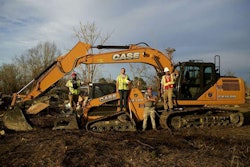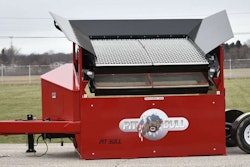 Lightning is extremely hot. A strike can heat the air around it to temperatures five times hotter than the sun’s surface.
Lightning is extremely hot. A strike can heat the air around it to temperatures five times hotter than the sun’s surface.Like most forces of nature, lightning is unpredictable and capricious. It has been recorded traveling 40 miles from cloud sources to cause injuries and deaths, according to the National Lightning Safety Institute.
Most lightning victims are not struck during the worst of a thunderstorm, but before or after it reaches its greatest intensity. The best rule of thumb is “if you can see it, flee it; if you can hear it, clear it.”
Hearing thunder means that you are within striking distance. It is a myth that heat lightning poses no threat, as it is a thunderstorm that is too far away to hear. If the storm approaches, follow the same lightning guidelines below.
The Occupational Health and Safety Administration (OSHA) and the National Oceanic and Atmospheric Administration (NOAA) recommend that employers and supervisors follow these lightning best safety practices when workers are outdoors:
- Check NOAA weather reports: Before beginning any outdoor work, employers and supervisors should check NOAA weather reports (weather.gov) and radio forecasts for all weather hazards.
- OSHA recommends that employers consider rescheduling jobs to avoid workers’ being caught outside in hazardous weather conditions. When working outdoors, supervisors and workers should continuously monitor weather conditions.
- Watch for darkening clouds and increasing wind speeds, which can indicate developing thunderstorms. Pay close attention to local television, radio, and Internet weather reports, forecasts, and emergency notifications regarding thunderstorm activity and severe weather.
- Seek shelter in buildings: Employers and supervisors should know and tell workers which buildings to go to after hearing thunder or seeing lightning. NOAA recommends seeking out fully enclosed buildings with electrical wiring and plumbing. Remain in the shelter for at least 30 minutes after hearing the last sound of thunder.
- Vehicles as shelter: If safe building structures are not accessible, employers should guide workers to hard-topped metal vehicles with rolled-up windows. Remain in the vehicle for at least 30 minutes after hearing the last sound of thunder.
- Phone Safety: After hearing thunder, do not use corded phones, except in an emergency. Cell phones and cordless phones may be used safely.
There is no safe place outside during a thunderstorm, but these actions can help reduce the risk of being struck if you’re caught outside:
- Immediately get off elevated areas such as hills, mountain ridges, or peaks.
- Never lie flat on the ground.
- Never shelter under an isolated tree.
- Never use a cliff or rocky overhang for shelter.
- Immediately get out and away from ponds, lakes, and other bodies of water.
- Stay away from objects that conduct electricity.
If a coworker is struck by lightning, immediately help them. They do not carry an electrical charge.
- If possible, move the victim to a safer place, away from the risk of another strike.
- Cardiac arrest can occur if someone is struck, so check for breathing and a pulse. Perform CPR if trained; otherwise, call 911.
- Other symptoms of being struck by lightning include burns, nervous system damage, and loss of hearing or vision.
- Treat electrical burns with a dry, sterile bandage, but do not try to cool the burn.









